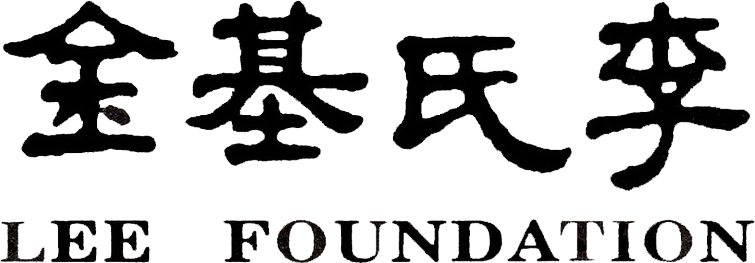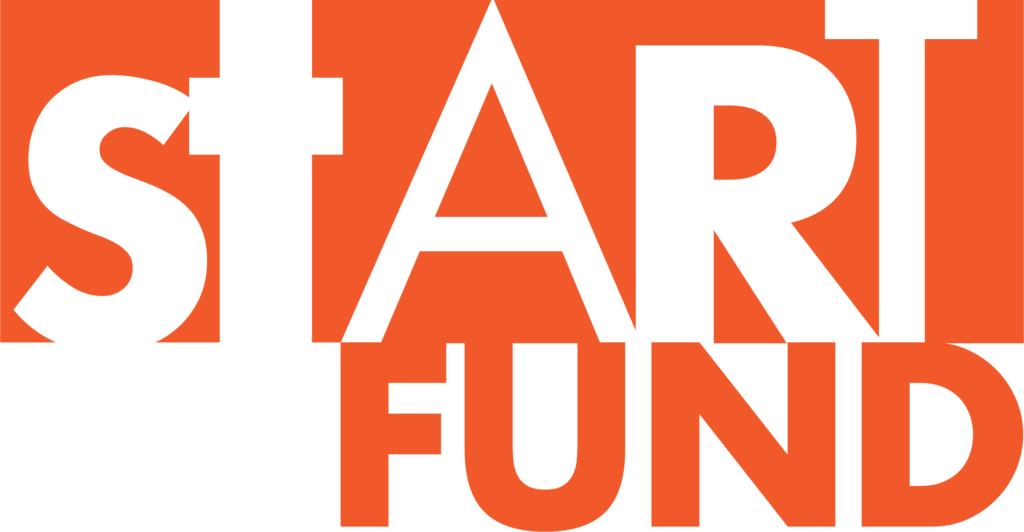By Vidhya Nair
VN: Tell us about your family background – family members & growing up years in India?
RV: I was born and raised in Chennai. Around the time of my birth, my father was already a well-known celluloid-film hero – Madras Kandaswami Radhakrishnan, known professionally as M K Radha. His father, my paternal grandfather who was a lawyer, Kandasamy Mudaliar was an avid theatre-maker and had ambitions for my father to be a leading actor. In the 1930s, he was one of the earliest theatre directors to present Shakespeare plays in Tamil. It was my grandfather’s script for “Sathi Leelavathi” [based on S S Vasan’s (who founded Gemini Studios) novel of the same name, also based on an English novel] which became my father’s debut film in 1936. The story explores themes of temperance, social reform, Gandhian concept of selfless service and the plight of labourers. The film was a hit and my father became an overnight star and he remained so for the next twenty years resulting in him receiving the Padma Shri in 1973 and a colony in Teynampet, Chennai named “M K Radha Nagar” in his honour. Incidentally, my father’s debut film was also the debut of M G Ramachandran (MGR) who also went on to become a leading actor and politician recognised and highly regarded around the world. They belonged to the same theatre group – MGR, his brother, M G Chakrapani, my father so it was like a family. Many of the actors of that generation came to be known in my home as members of our own family – we called them Chittappa & Mama. MGR Chittappa, Shivaji Chittappa, NS Krishnan Mama, Thangavelu Mama, Balaiya Mama was how I would address them. A well-known film my father acted in was “Apoorva Sagodharargal”in 1949 where he played the double role of look-alike brothers produced at Gemini Studios in Tamil, Telegu and Hindi simultaneously which had Nagendra Rao as the villain and P Bhanumathi as the female lead, who also sang most of the songs. The two brothers my father played in the film were Vikramasimhan & Vijayasimhan. I was born during the making of this film, that’s how I came to be named Vijayan after this film character and professionally, I came to be known as Radha Vijayan.
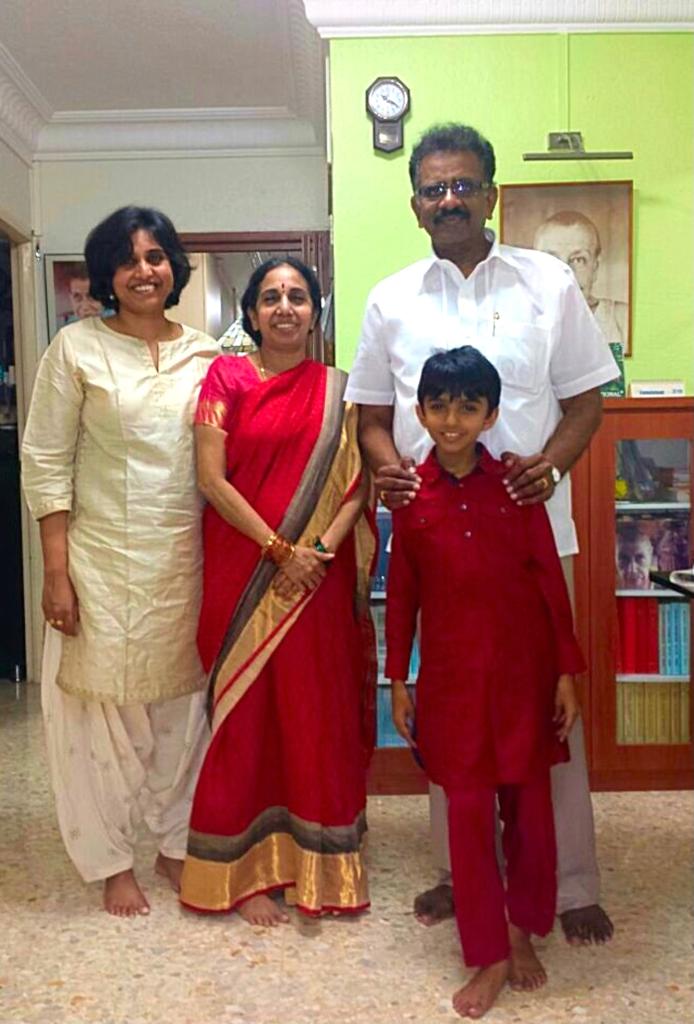

I was the youngest of 8 children and 1957 when my father had a heart-attack and it became difficult for him to continue acting. My late eldest brother, an engineer became the backbone of the family and helped raise us all. One of my sister’s married film actress, M S Santanalakshmi’s son, M D Seetaraman and another sister married E V Saroja’s brother, E V Rajan, film producer. Some of my siblings has passed and rest are based in Chennai. I myself married Usha, daughter of Karukurachi P Arunachalam – famed Nadaswaram [ acclaimed for the timeless classic “Singara Vellan” track, a breakthrough hit for S Janaki in the 1962 film “Konjum Salangai”]. I have only one daughter, Abhirami. and I have a grandson, Aryan who is now a 10th grader.
VN: Tell us about your learning experiences with music in your younger days?
RV: From a very young age, I had a great passion for music. As a child, when I would go with my father for his film shootings, the moment I saw the assembled orchestra, I would be seated with all the musicians, watching them intently. I was a self-taught guitarist, by listening I came to imbibe the melody and techniques. There was not much encouragement from my mother’s side because they were familiar with the film and music industry. If there was a recording, you had wages otherwise nothing. Guitar unlike today was not known widely in the 1960s when I was a youngster but Manikavinayagam, my cousin (son of Vazhuvoor Ramaiah Pillai – famed Nattuvanar and Bharatanatyam guru) had a very old hand-made guitar at home. I used to spend time after school at his home and he gave that guitar to me. I restituted that guitar – stringed it and practiced on it much to my mother’s unhappiness who was keen I focus on my academic studies.
E V Saroja noted my playing and bought me my first electric guitar. I learned both Western & Carnatic tunes by listening. The lyrics didn’t matter and I practiced regularly. Then it came to a standstill as I didn’t have a teacher but many who heard me felt I had potential. It was a friend, Krishna who recommended me to Dhanraj Master who accepted me earnestly as knew my father who was the star of that film, Chandralekha (1948) where Dhanraj Master had performed for the soundtrack of the film, This was a historical period film, then the most expensive film of its time, distributed internationally and today considered an Indian classic. I was 12 when I started learning with him and at 13, I performed my first concert in school. He would get me to write out notations, taught theory and I also picked up skills in piano as well which aided my keyboard playing later. It was at this time I met my best friend, Sadanandan who became the lead guitarist for Iliyaraja. We used to practice for hours together, often the guitar pieces of S Philip, the leading guitarist in filmdom and I dreamed of meeting and playing with him. I was able to achieve this dream finally in the 1980s. I also completed my classical guitar studies from Trinity College of Music, London and Indian Classical music under Karnataka Vainika Gana Vidyalaya and my interests broadened to include rock, pop, blues, country, jazz and fusion music. As I was a gold medallist in my degree program, I was easily recruited by a leading petrochemical company, music became a part-time activity. In 1965, I got to perform guitar in my first recording for a theatrical film.
VN: You began to work with Indian music directors from the 1960s onwards. Share with us the memorable experiences you’ve had?
RV:To be in a live recording studio is a fascinating experience. It’s like taking an exam because you don’t know what to expect. In 5 hours, you will be given notes to practice and then you have to perform live. In a live orchestra, there are two tracks of voice and instruments. If anything is missed, everyone will be required to retake. It was amazing to hear some of the great vocalists, like T M Soundarajan who could sing in a single take. When you first perform in a live recording especially alongside vocals with the greats like P Susheela, S Janaki, S P Balasubramanian, K J Yesudas, you can to experience first-hand creativity within music direction and instrumentation which is lost to the industry today, with the advent of technology. I had the privilege to work with many music directors from R. Sudarsanam, S.M. Subbiah Naidu, Pandu, M.S. Viswanathan, V. Kumar, T.R. Pappa, S.V. Ramanan, Vijayabhaskar, Sahil Choudhary, Bombay Ravi, Ananda Shankar, Shyam, Philips, Shankar-Ganesh, Das Daniels, Manickka Vinayakam, Dhakshnamoorthy, Devarajan, R.K. Shekar, Ratnam, G.K Venkatesh, K. Ravindran, Thayanban, Ilayaraja, Gangai Amaran, V.S. Narasimhan, L. Vaidyanathan, Deva, Vijay Anand, Devendhran, Murari, Chidambaranathan, Jhonson, Rajamani, Mohan Sithara, Balabarathy, Illaya Gangai and Illavarasan (Sirpi).
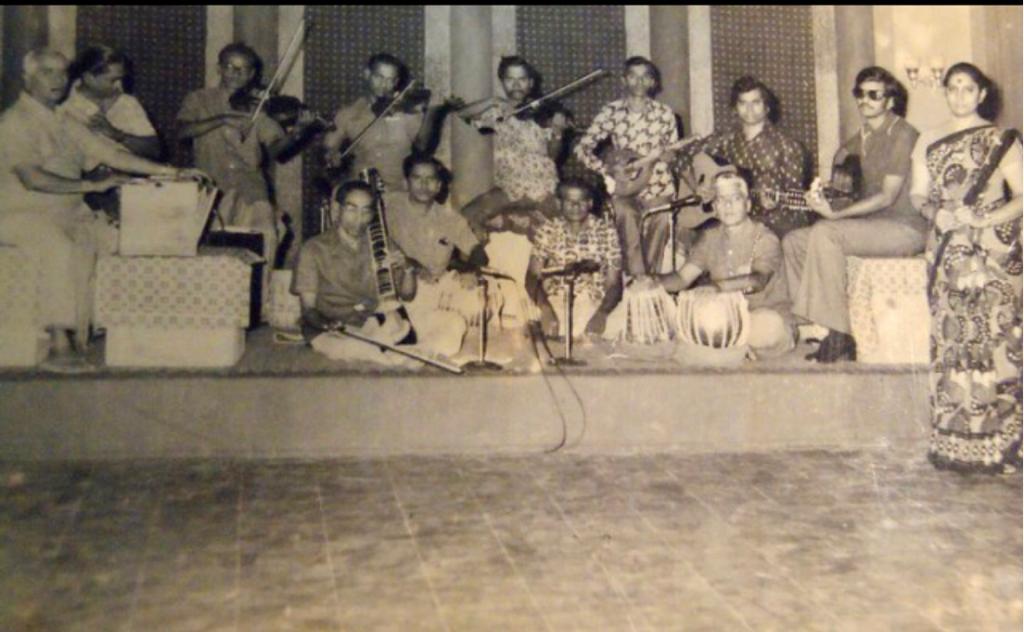
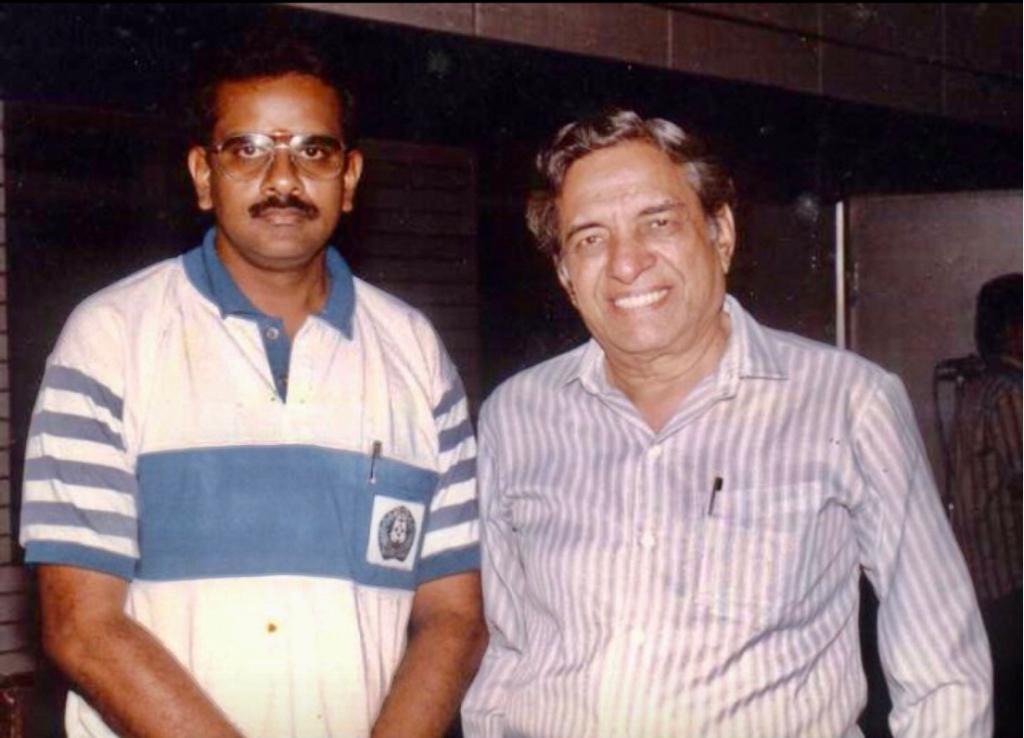
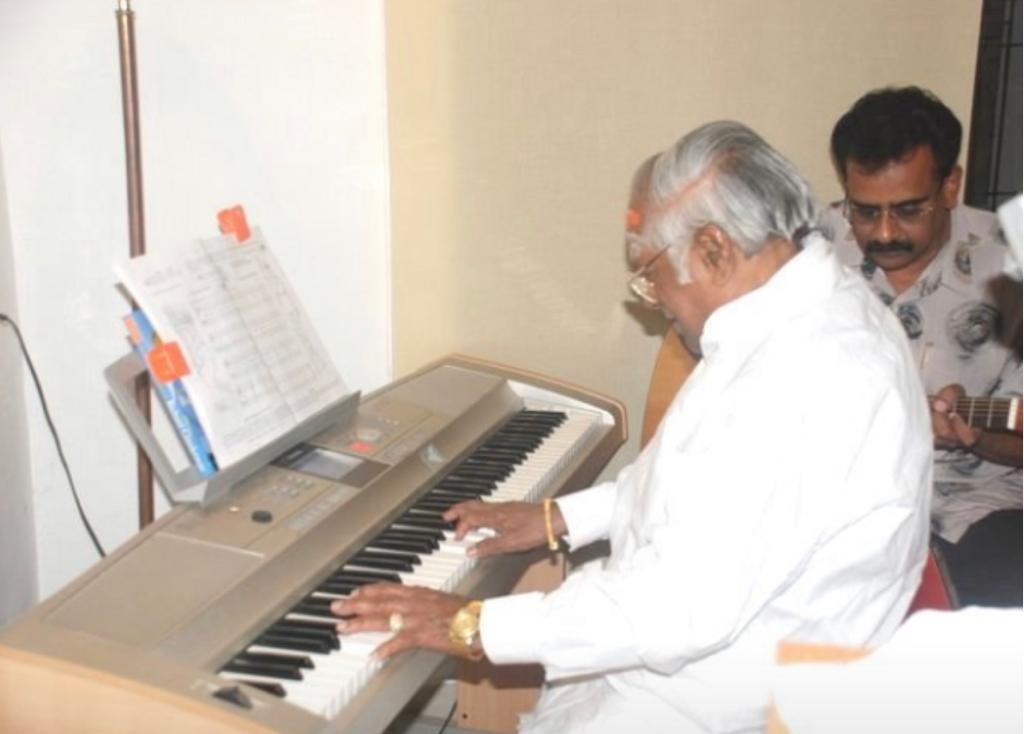
Each one of them contributed to my artistry and I built my experience over 30 years with all of them. The way we play the instrument calls for perfection, tuning it precisely and we would be given call sheets by different directors and move from studio to studio for different films. Over time, my hobby came to become my profession and it reached a point when regular recordings allowed you to earn more than a desk-bound corporate job. I was doing well in my job but music pulled me over. There was a point when I was working regularly for Gangai Amaran in the 1980s. I met my guitar idol S Phillip as he was the musical arranger and conductor for Gangai Amaran and in between our recordings, he taught me guitar theory and arrangements and I was privileged to play alongside him. That was a highlight of my years of film music. Gangai Amaran at that time was evolving from music to film direction and I started to get less recordings as younger solo guitarists were being hired [often talents I introduced] and it started to make me consider a different direction. It was around this time when I was recording for Malayalam films when I got a call from Bharatanatyam danseuse, Padma Subramanyam (Paduakka) which prompted my eventual move to Singapore.
VN: Yes! How did you come to be in Singapore and what have been some of your highlight experiences?
RV: I had already been working with Paduakka for some time and we had a long-standing relationship from our father’s time as her father was famed film director, K Subramanyam who pioneered the Tamil film industry in the 1930s. She’s a versatile artiste, besides being a dancer and scholar, she was also a music composer and singer. I would perform for her musical recordings. She invited me to join her in a project she was doing in Singapore [ a dance production called “Ritu Mahathmiyam” for the Singapore Arts Festival 1992 featuring Apsaras Arts, SIFAS & Nrityalaya Aesthetics Society with music composed by Padma Subramanyam featuring a multi-national orchestra] – to work with Chinese and Carnatic musicians converting Western notations for their orchestral pieces. I remember visiting Singapore in 1992, staying at the Oberoi Imperial Hotel for a month. I met Aravinth and Gnanavenothan for the first time [ I used to tease them by calling them Viswanathan-Ramamurthy then!] They were both at Kala Mandhir [Temple of Fine Arts] at that time. Paduakka’s nephew, Kannan (veena artiste) was leading the Carnatic section and these young musicians would sincerely take notes and learn the compositions. At our first rehearsal, I noticed how Chinese musicians rewrote the Western notes into numbers and the way they transposed this. I spent a whole evening with the Chinese orchestra and observed them and overnight, I was able to write all the notations in Chinese numbering as required by them. They were very touched and became very friendly. They began to call me “Viji” and it was a wonderful experience working with them.
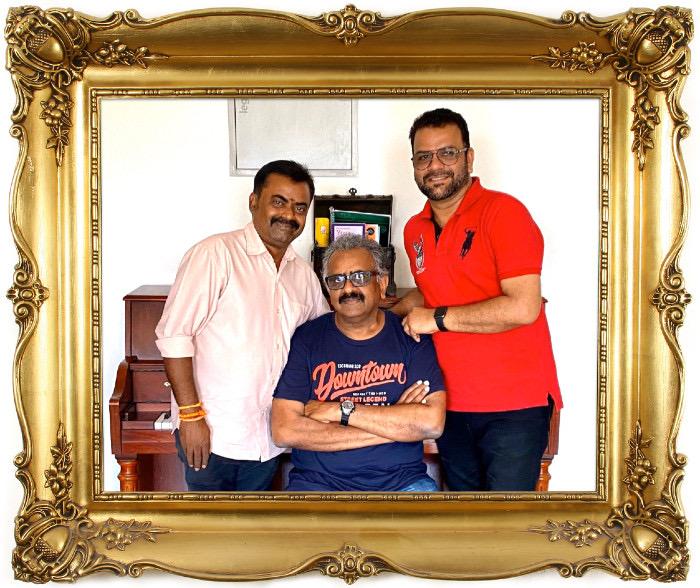
That was also the first time I met both Neila akka and Satyalingam Mama. Neilaakka came to the airport to welcome me. She made an impression on me at the first instance, she had a majestic personality. I felt like she was a family member, like we had met before. The way she behaved; she was like a mother. Mama was even more so. He treated me like his son. We had so many laughs together. Most unforgettable couple. I used to enjoy their teasing banter and lovable fights. They took care of our hospitality, made us feel so welcome. Their car rides were a laughing riot. I really miss them both. They were a jolly couple! I enjoyed Mama’s music musings too. If the kalapramanam and shruti are imperfect, he would criticise the artiste. When I first started the Singapore orchestra, he gave me his fullest cooperation and encouraged me a lot. It was only when I met them that I learned that my father was the guest of honour at Neila akka’s arangetram in Rasika Rangani Sabha Mylapore. Neila akka had photographs from then. What a small world! Whatever commitments I used to have, when I received a call from them, I would drop everything to work with Neila akka. I really enjoyed our friendship and camaraderie.
Working with the Chinese orchestra musicians, I also played the piano for this production. I returned back to Chennai after the recording but through National Arts Council, I was commissioned back to Singapore to conduct the Chinese Orchestra for the combined Indian dance programme in 1992’s Singapore Arts Festival. During this time, Uncle Bhaskar (K P Bhaskar) offered me a position in Nrityalaya Aesthetics Society at Stamford Arts Centre as Music Director. If not for both Uncle Bhaskar and Santha akka, I would not have been in Singapore for all these years. My eternal gratitude to both of them!
I succeeded in starting the first Nrityalaya choir introducing singing in harmony and counterpoint based on Indian Ragas, performing in the “Acapella” style for the first time in Singapore under K P Bhaskar’s guidance. My music research papers on “Role of Microtones in Indian Ragas” and “Evolving Traditions” were presented as a performance (Aravinth and Ghana played under the guidance of Joe Peters) and this was published as a CD-ROM at NUS, Centre for the Arts in 1993. In time, I decided that my orchestral style is cinematic thanks to my experience in films and I would be at my best as a free-lance artiste.
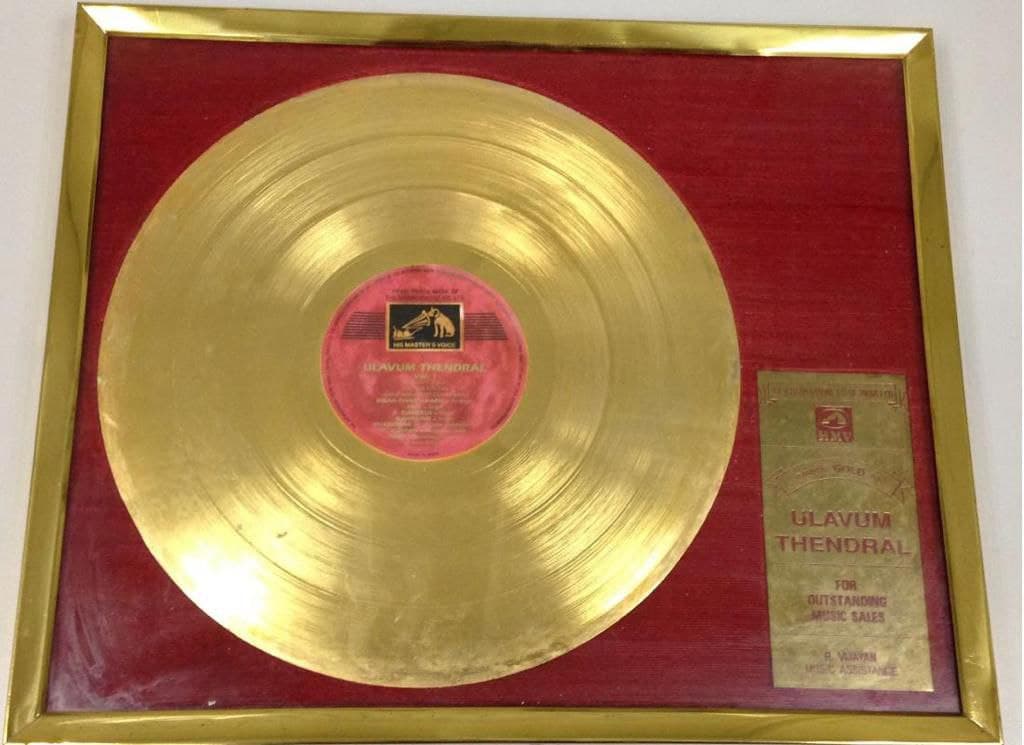
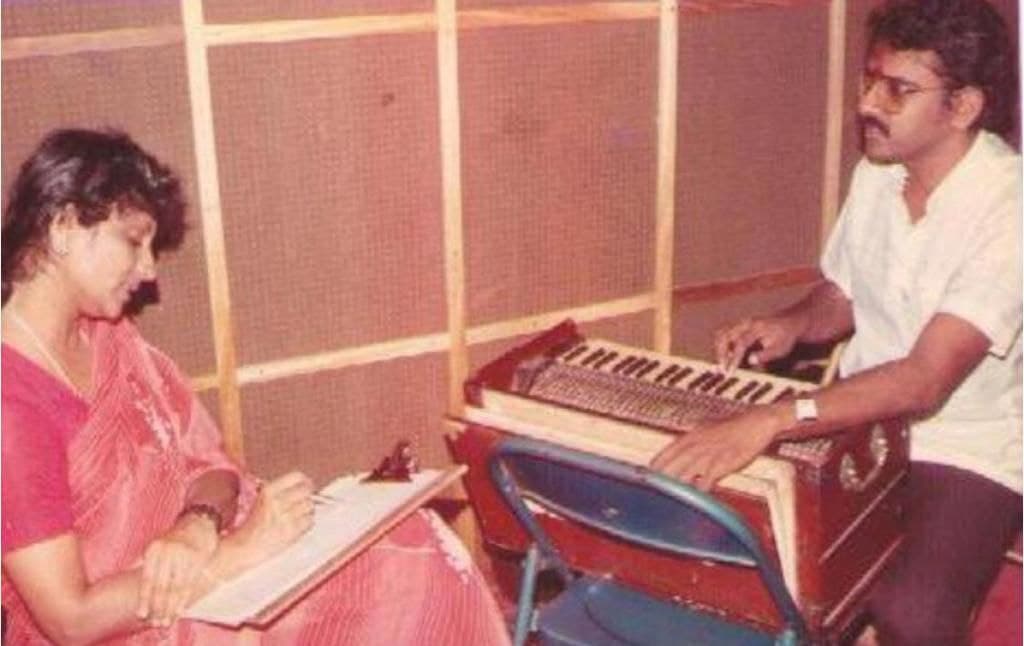
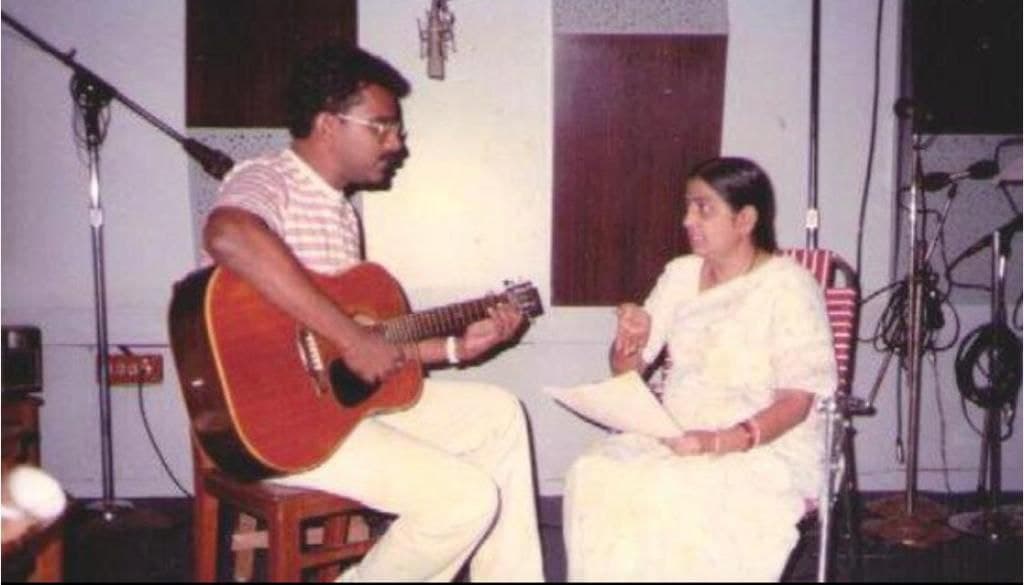
I recall the Folklore Festival in Hong Kong which I attended with the Satyalingams in 1997. It was my first time there. We conducted workshops, fielded questions about Indian instruments – mridangam, veena, vocal. T Ramanan, Aravinth, Shobha Shekar, Bhagya Murthy were all there. We had fun roaming around Hong Kong – I learnt how to bargain from Satyalingam Mama! Mama was very disciplined. He liked things to be where they are meant to be, he was serious and appreciated dedicated and devoted musicians but he had a great sense of humour. At home, he liked things to happen by clock-work and expected others to be as meticulous as him. He was not limited to Carnatic Music. He appreciated all forms of music. Film and light music are legitimate mediums. There are enough examples of classical musicians who have created beautiful film music.
I started my own school, Mirra Fine Arts in 2000 at Fortune Centre originally, teaching guitar and keyboard classes and now, I’m located at Jurong Gateway and over the last 20 years, I teach and became guest composer for many productions, conducting Trinity College accreditation exams, guest examiner at other institutions, judging music competitions at community centres and television and in 2016 was involved in the development of Korg Pa600SG Professional Arranger, Singapore’s first Musical Keyboard.
These days, online teaching has been quite beneficial as I am able to share many of my experiences with my students. I have a majority of Indian students and I encourage them to qualify themselves so they can become professional musicians. Keyboard is popular, its easier and many instruments can be played. My students have performed in many locations like Esplanade’s Kala Utsavam where they perform medleys of film music from MSV to A R Rahman. When I teach, I insist on perfection so showing and sharing is important. I myself listen to lots of music – orchestration, Carnatic recitals – listening is an important part of learning and inspiration. I also watch good films. The emotional heft of a film inspires me to think about how the music is to be created.

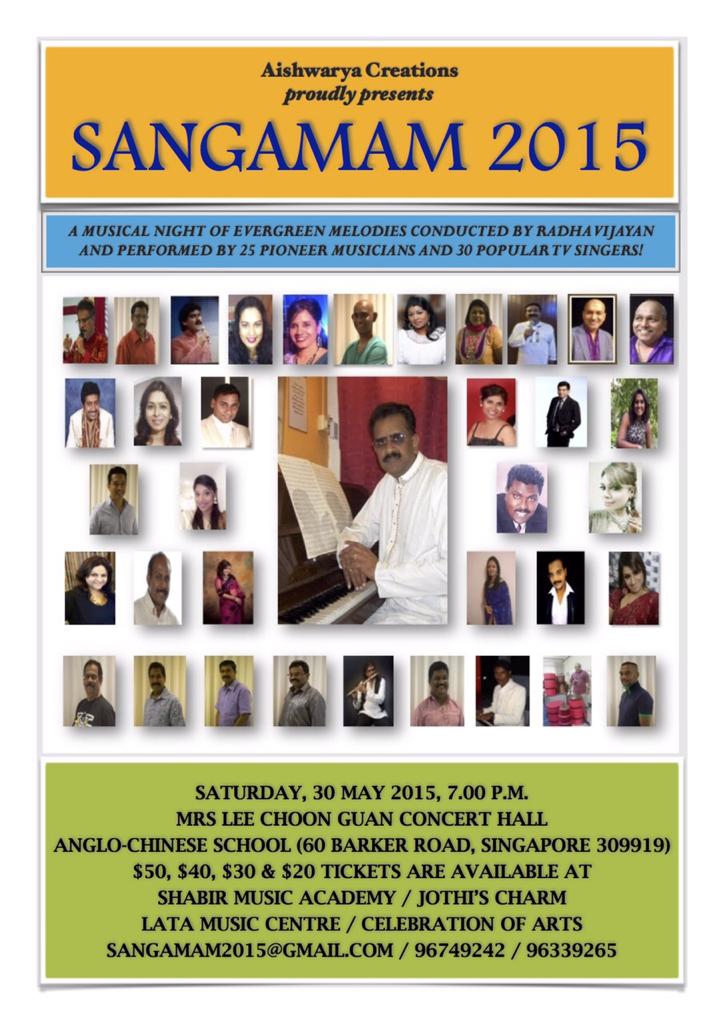
The last 30 years in Singapore have been fulfilling and fruitful. When I think back about my life, I’m most humbled by the lessons learned along the way. One of them is the respect my father earned as an artiste and human being in the industry. I have a name because of him. Another experience I recall was the live concert for “Thakita Thadimi”- the finale song sung by S P Balasubramanian in Salangai Oli (1983), there is a “Veena” segment in that song which I played on the guitar. I received so much praise for this, SP Bala hugged me immediately. A great artiste and friend (who passed from Covid19 in 2020). In Singapore, I’m proud of the fusion music orchestration I helped to create bringing Malay-Chinese-Indian-Western sounds together. In recent times, I am an active senior in my Bukit Batok estate, they gave me an award for my contributions to the community. I had also received a long service award for 15 years of service to music serving in People’s Association’s Orchestra.
VN: Can you share your thoughts on Aravinth and Apsaras Arts today?
RV: For me, Aravinth is like my much-loved younger brother. He has a great sense of humour. I have never seen him angry or grumpy at any time. He is very open and frank and has good knowledge about the industry here. From what I’ve seen over the years, he has brought Apsaras Arts to new and greater heights. He is the backbone of Apsaras Arts and I can see the progress. The way he writes, his artistic direction, the productions he’s created. The way he organises – he’s meticulous and he has used all his experiences as an orchestra and solo musician to observe and analyse what is needed to bring it to the next level. I see a remarkable improvement in the scene – the rapport built with Indian artistes. He has put in painstaking work. His health got spoilt because of his work, dedicating himself fully to the arts. He gives due respect to artistes and engages very sincerely. I had the pleasure of playing with him (the veena) at the Istana alongside Yangqin (Chinese string instrument) in a fusion performance a few years ago. It was an opportunity he made possible. One of my early intentions when I first came to Singapore, I was keen to help young musicians to come up. I must have been viewed then as a threat but I think I have been able to give advice especially in composing and arrangements.

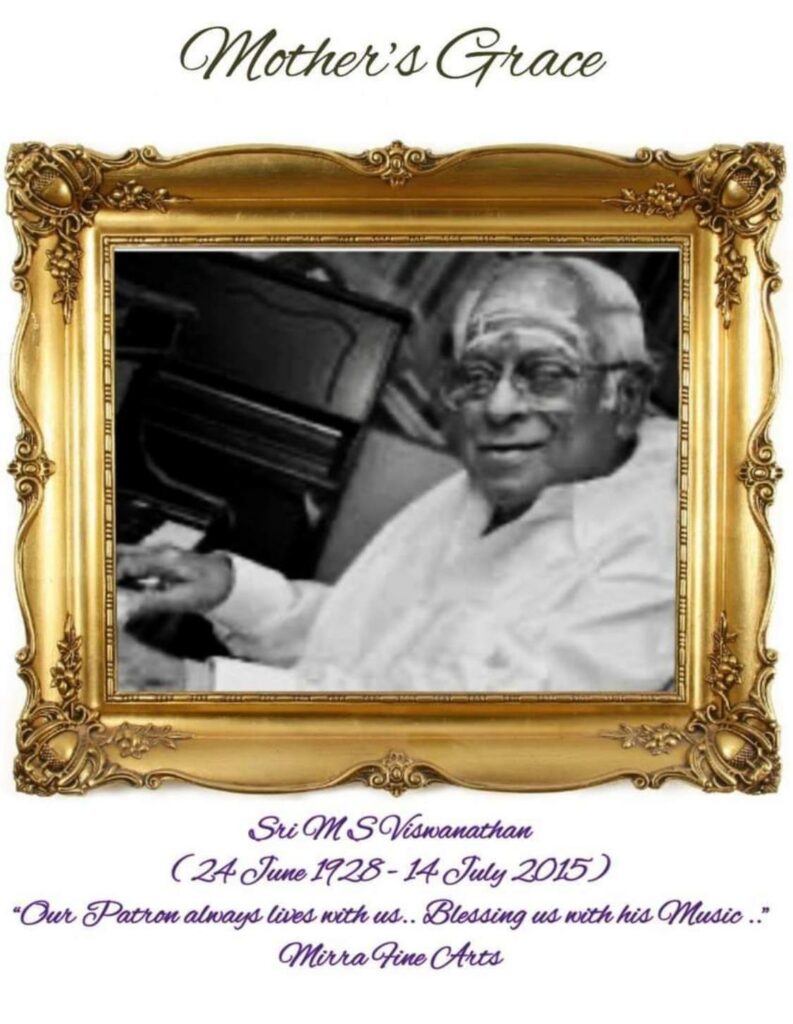
VN:I notice that you are an ardent devotee of The Mother (of Shri Aurobindo Ashram). Can you share your spiritual journey?
RV: I was introduced to The Mother around the time I moved to Singapore. In the 90s, my wife made a short stop at the Ashram in Pondicherry and she encouraged me to take up “total surrender” and “transformation of attitude” principles as taught by Mother.
I learned a lot about discipline and self-realisation and how much of inner strength we have within us and the concept of how we can positively respond to others and situations. Often in life, we are given several opportunities to remedy problems but we often don’t take them. We can’t blame the divine for things that go wrong with us. It took me a long time to accept this realisation.
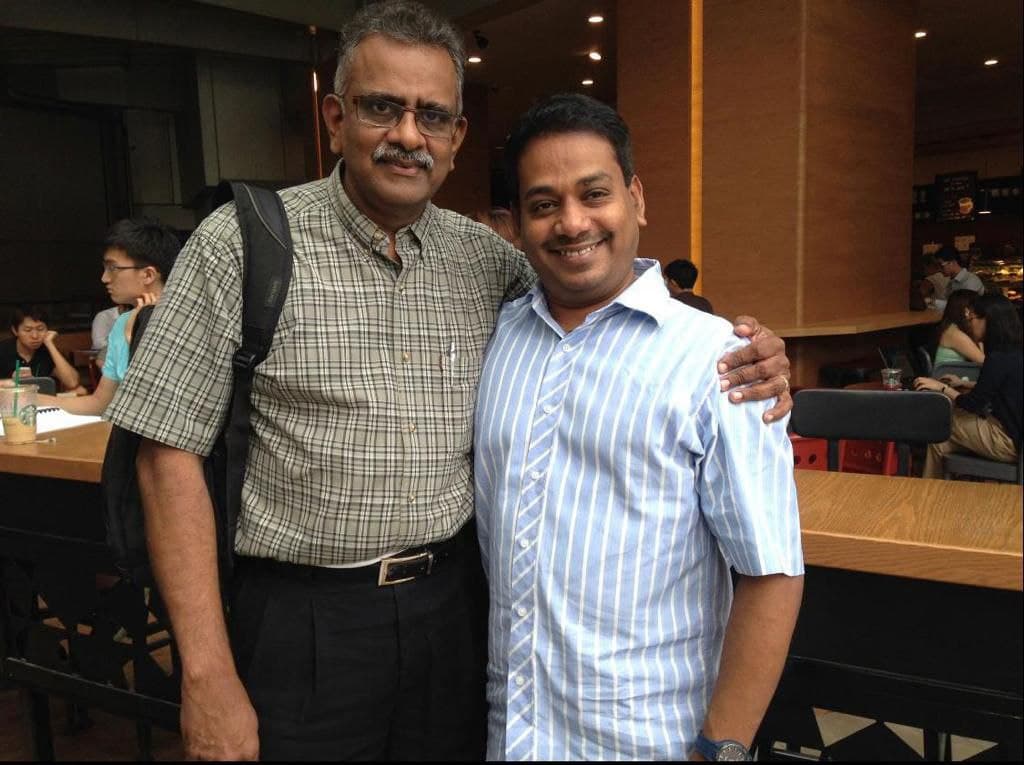
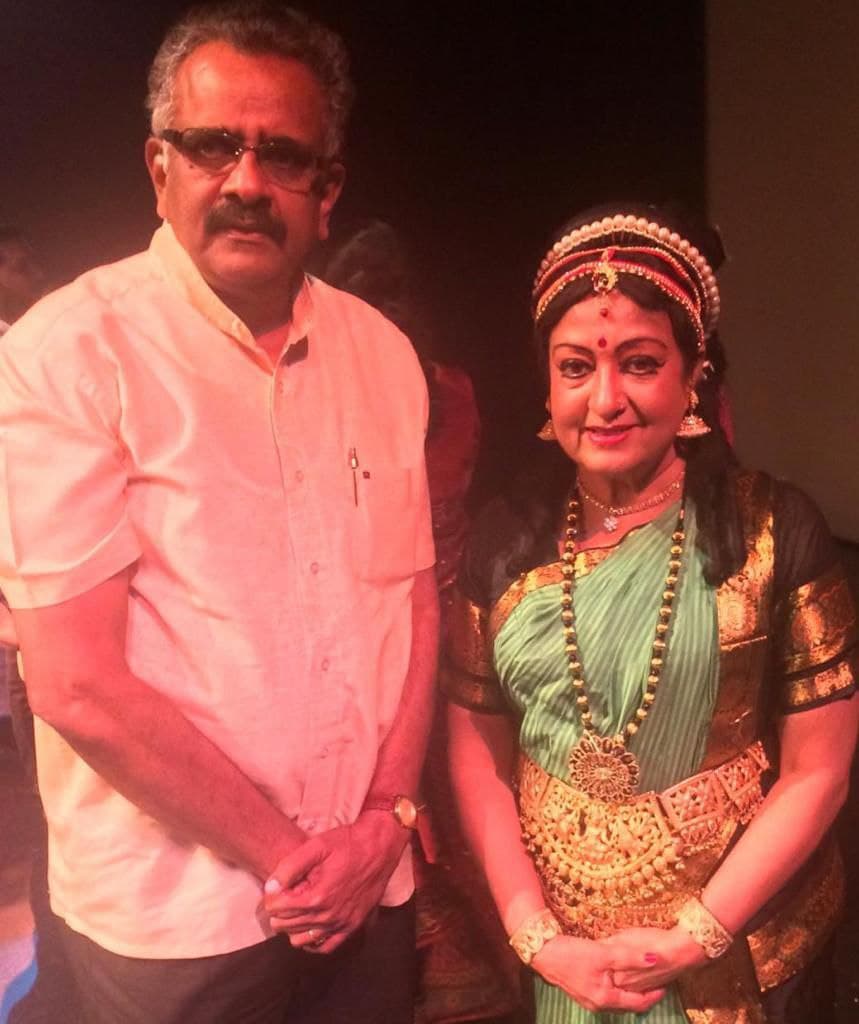
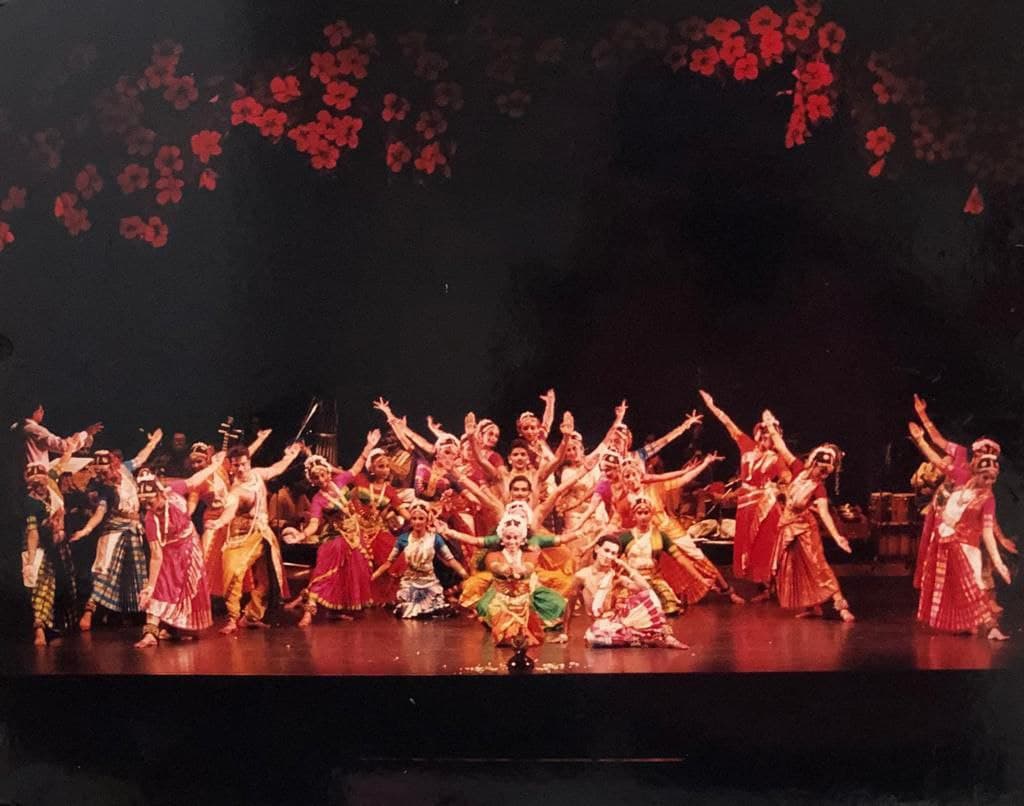
VN: In your years in Singapore, how have you seen the Indian music scene develop?
RV: It has definitely developed positively over the years. The awareness of Indian arts has come in – whether it’s in classical music or Bharatanatyam, people want to learn properly and be certified. The many institutions – SIFAS, Nrityalaya have made a contribution and impact in society. If you see talentimes these days, the standards have come up. Today, a new singer can sing a song confidently after two tries because they have some basics. Even my keyboard students, I force them to learn some Carnatic music. It makes a lot of difference when you know formal music. Today, technology has caused for music to be distorted electronically. I wish live musicians are used more in television shows. I used to pitch to them that you can only feel the music when it is live and offered to train a set of musicians in three months but by using synthesisers, the real musicians have come to be removed. There are some like Mohd Rafi and his brother Noor, Basheer and their band who are still maintaining music standards and performing widely.
I’m happy to see this.




